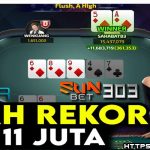Introduction
Horse riding commentary is an integral part of equestrian sports, adding depth and context to the thrilling world of horseback riding. Whether you’re an aspiring commentator or simply a horse enthusiast looking to appreciate the sport at a deeper level, this comprehensive guide will equip you with the knowledge and skills needed to excel in horse riding commentary. In this article, we’ll explore the nuances of horse riding commentary, from understanding the sport’s intricacies to mastering the art of delivering engaging commentary.
Understanding the Sport
Before diving into the specifics of commentary, it’s crucial to have a solid understanding of horse riding as a sport. Equestrian sports encompass a wide range of disciplines, including dressage, show jumping, eventing, and rodeo, each with its own unique rules, objectives, and terminology. To provide insightful commentary, familiarize yourself with the different disciplines, their histories, and the key elements that judges and viewers look for in each.
The Role of a Horse Riding Commentator
A horse riding commentator serves as a bridge between the action in the arena and the audience watching from afar. Their primary role is to provide context, analysis, and engaging descriptions of the riders, horses, and the overall competition. Effective commentary enhances the viewers’ understanding and enjoyment of the sport
Developing Expertise
To become a proficient horse riding commentator, you must develop expertise in several areas:
- Knowledge of Horses: Understanding horse breeds, anatomy, behavior, and training is essential. Familiarize yourself with the specific horses and riders competing in each event.
- Technical Understanding: Learn the rules, scoring systems, and judging criteria for each discipline. This knowledge will enable you to provide insightful analysis during competitions.
- Communication Skills: Effective communication is the cornerstone of great commentary. Work on your diction, tone, and ability to convey excitement and emotion while maintaining professionalism.
- Research and Preparation: Invest time in researching the event, its participants, and recent developments in the sport. Having background information will help you provide context during commentary.
Crafting Engaging Commentary
The art of commentary lies in your ability to engage and captivate your audience. Here are some tips to keep your commentary engaging:
- Storytelling: Weave compelling narratives about the riders, their journeys, and the challenges they face. Highlight personal anecdotes and memorable moments.
- Clarity: Use clear and concise language to describe the action. Avoid jargon that might confuse casual viewers.
- Emotion: Convey the excitement, tension, and drama of the competition through your voice and choice of words. Be authentic in your reactions.
- Variety: Maintain a good balance between play-by-play analysis and color commentary. Share interesting facts, historical context, and technical insights.
- Audience Engagement: Encourage viewer interaction through social media and live chat. Address questions and comments during breaks in the action.
Conclusion
Becoming a skilled horse riding commentator requires dedication, knowledge, and a passion for the sport. By understanding the intricacies of equestrian disciplines, developing expertise, and crafting engaging commentary, you can provide valuable insights and enrich the experience for horse enthusiasts around the world. Remember, horse riding commentary is not just about describing the action; it’s about sharing the beauty and excitement of this timeless sport.
Keyword Usage: Horse riding commentary is an art that combines knowledge, expertise, and engagement. In the world of horse riding commentary, passion and dedication go a long way in delivering a memorable experience for the audience.





